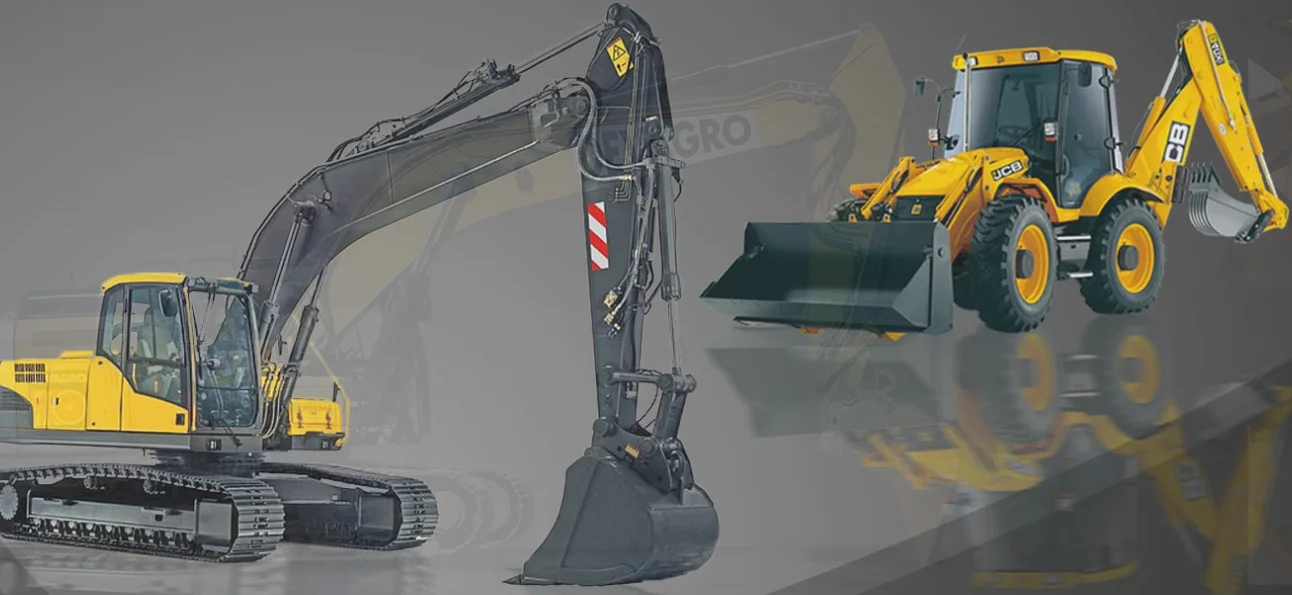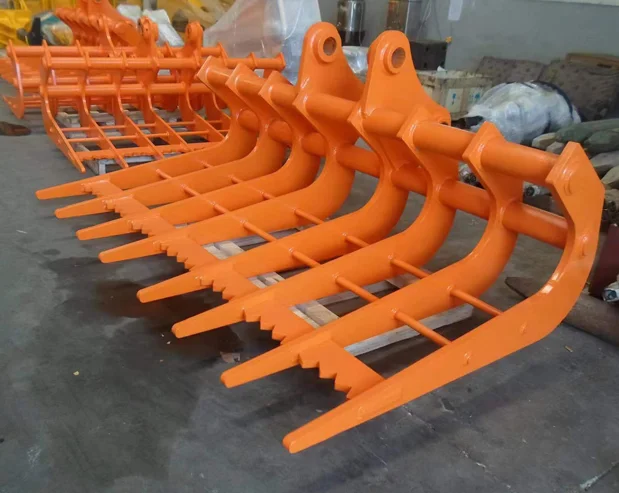What Are the Operational Benefits of Using Fleet Numbering for Attachments
Adopting a fleet numbering system for excavator attachments is a smart move that greatly boosts efficiency, cuts down on costs, and improves safety on the job. By giving each tool its own unique code, you make it super easy to keep track of inventory, match the right attachment to the right machine, and plan out maintenance without a hitch. This helps avoid expensive delays, stops mix-ups, and keeps your pricey gear running longer.
How Does Fleet Numbering Improve Equipment Identification?
Fleet numbering, or tagging each piece of gear and attachment with a special code, is a basic yet powerful way to handle excavator tools across different work sites. When you’ve got tons of machines, tools, and workers to manage, being able to spot and track each item fast is a game-changer for keeping things running smoothly.
Streamlined Inventory Management Across Job Sites
On big projects where gear is spread out over several spots, a clear fleet ID setup lets you keep an eye on your stuff in real time. No more guessing or scribbling notes by hand. This is a big deal when you’re juggling different excavator attachments like rakes, breakers, and hammers. Take the Excavator Rake, for instance—it comes in models for 3 to 35-ton machines with varying weights and sizes. Without a proper ID, it’s too easy to mix things up between sites, which slows everything down and causes headaches.
Faster Attachment Matching With Specific Excavator Models
Fleet numbering makes it a breeze to double-check if an attachment fits a machine. You can quickly see if a rake or breaker matches the weight and hydraulic needs of an excavator. For example, before hooking up Guangdong Kingho’s grabber for 20-36 ton excavators, you’ve got to make sure the machine’s hydraulic flow is at least 120L/min and the pressure hits 210bar. With a unique fleet ID tied to each tool’s specs, this kind of check becomes quick and painless.

Reduced Downtime From Misplaced or Mismatched Equipment
Mixing up gear often leads to mistakes or lost tools. But with unique fleet IDs marked or stuck on each piece—like on Hydraulic Breaker Hammer systems—you cut down on slip-ups when sending out or setting up equipment. This means less time wasted hunting for lost items or fixing wrong matches, keeping your project on track.
Why Is Fleet Numbering Important for Maintenance Scheduling?
Besides helping with identification, fleet numbering really shines when you tie it into your maintenance plans. It lets you keep tabs on usage hours and service needs automatically.
Simplified Tracking of Service Histories and Usage Hours
By logging each tool’s performance against its own ID, you build a handy digital record that sticks with the equipment for its whole life. This is huge for tough tools like pile drivers or demolition shears that get beat up a lot. For instance, a pile hammer used for pipe and steel plate work needs regular checks because of its high-speed output—up to 2800 rpm—and intense working pressure of up to 320 bar. Having that ID makes tracking a whole lot easier.
Enhanced Preventive Maintenance Planning
When IDs are linked to maintenance apps, you can plan ahead for servicing instead of waiting for something to break. This cuts down on surprise breakdowns, especially for tools like breakers or rakes that deal with rough ground conditions day in and day out.
Improved Reliability Through Consistent Monitoring
Fleet IDs make sure no tool gets overlooked. Every piece gets regular checks, no matter where it is or who’s using it. Kingho’s tough materials, like Q345 manganese plate steel and 42CrMo alloy pins, help tools last longer—but only if you keep an eye on them. Fleet numbering lets you do that easily, even with a huge lineup of gear.
What Role Does Fleet Numbering Play in Enhancing Job Site Efficiency?
On a busy site where every second matters, being able to grab and use the right tool right away saves both time and money for labor.
Faster Deployment and Retrieval of Attachments
With clear fleet numbers on every unit, site bosses can hand out tasks quickly without wondering what goes where. A tidy yard with numbered tools means less waiting around during shift switches or urgent situations. Honestly, it’s a small thing that makes a big difference.
Better Coordination Among Operators and Technicians
Workers know exactly which rake they’ve got. Techs know which breaker needs a look next. All of this happens because of standard labels. This teamwork is extra important with fancy tools like Guangdong Kingho’s hydraulic car dismantling pliers, which have rotating parts for 360° teardown. Clear IDs keep everyone on the same page.
Optimized Resource Allocation on Multi-Unit Projects
On big jobs with lots of machines working over different areas, fleet IDs help send tools where they’re needed most, not just where they’re closest. So, whether it’s a soil rake breaking up frozen dirt or a hammer pounding piles into a riverbed, the right gear gets to the right spot at the right time.
How Can Fleet Numbering Reduce Operational Costs?
Keeping costs in check is one of the clearest wins you get from using a solid fleet numbering system for your excavator tools.
Lower Risk of Redundant Purchases Due to Asset Visibility
If you don’t know what you’ve already got, it’s easy to buy extras you don’t need. Fleet IDs fix this by showing what’s in your stash, even if it’s stored far away or getting fixed. This simple trick can save a chunk of cash over time.
Minimized Repair Costs Through Timely Maintenance
Catching small wear issues early through planned checks tied to asset IDs means your repair bills stay low. This is super important for hard-hitting tools like Hydraulic Breaker Hammers, running at pressures up to 180 bar and striking as fast as 1400 bpm. Staying on top of upkeep for these is a must.
Increased Lifecycle Value of High-Performance Attachments
When you track tools from the start with fleet numbering, even the toughest gear holds up longer with steady care. This gives you better bang for your buck, whether you’re renting out tools or using them on multiple jobs yourself.
In What Ways Does Fleet Numbering Support Safety and Compliance?
Safety isn’t just about how well operators do their job. It’s also about making sure every tool is ready to go, and clear ID rules help with that big time.
Clear Identification During Safety Inspections
Regular safety checks go faster and more accurately when inspectors can match fleet numbers to their lists. No more guessing about what model it is or how worn it looks—just check the ID and move on.
Accurate Record-Keeping for Regulatory Audits
When it comes to paperwork for rules and regulations, you often need to prove tools were cared for properly. Fleet numbers give you the trail to follow during checks by officials or insurance folks, keeping you covered.
Safer Operation Through Proper Attachment Pairing
Using the wrong attachment isn’t just bad for the gear—it’s dangerous for everyone nearby. Take the Excavator Rake, for example. It comes in different models weighing from 180 kg to 2050 kg, and it’s got to match excavators from 3 to 35 tons based on the type. Getting this right with fleet IDs keeps things safe.

How Is Fleet Numbering Integrated Into Kingho’s Product Line?
From the drawing board to the final build, unique IDs are a key part of every tool made by this top maker of smart mobile gear for excavators.
Guangdong Kingho Technology Co., Ltd. has earned its name over more than a decade by focusing on top-notch builds paired with digital tracking built into every product. This includes gear like the Excavator Rake, Hydraulic Breaker Hammer, and pile hammer.
Each piece comes with:
-
Special tags carved into main parts
-
Trackable numbers in hydraulic setups
-
Labels that work with inventory tracking apps
These IDs fit right into your current systems and make everything more open and easy to manage at every step.
FAQ
Q1: How do I implement fleet numbering in my existing attachment inventory?
A: Start by giving each tool a unique code based on its type, year, or size range. Then, mark them with engraved tags or tough stickers and link those to digital files for easy lookup.
Q2: Can I retrofit older attachments with serial numbers?
A: Yes, you can add IDs to older gear by tagging them manually. After that, update your records to match past use with the new codes so everything lines up going forward.
Q3: Do fleet IDs integrate easily into telematics systems?
A: For sure! Most new tracking platforms let you add custom fields for these IDs. You can type them in or scan them with QR codes or barcodes to sync everything in real time.

